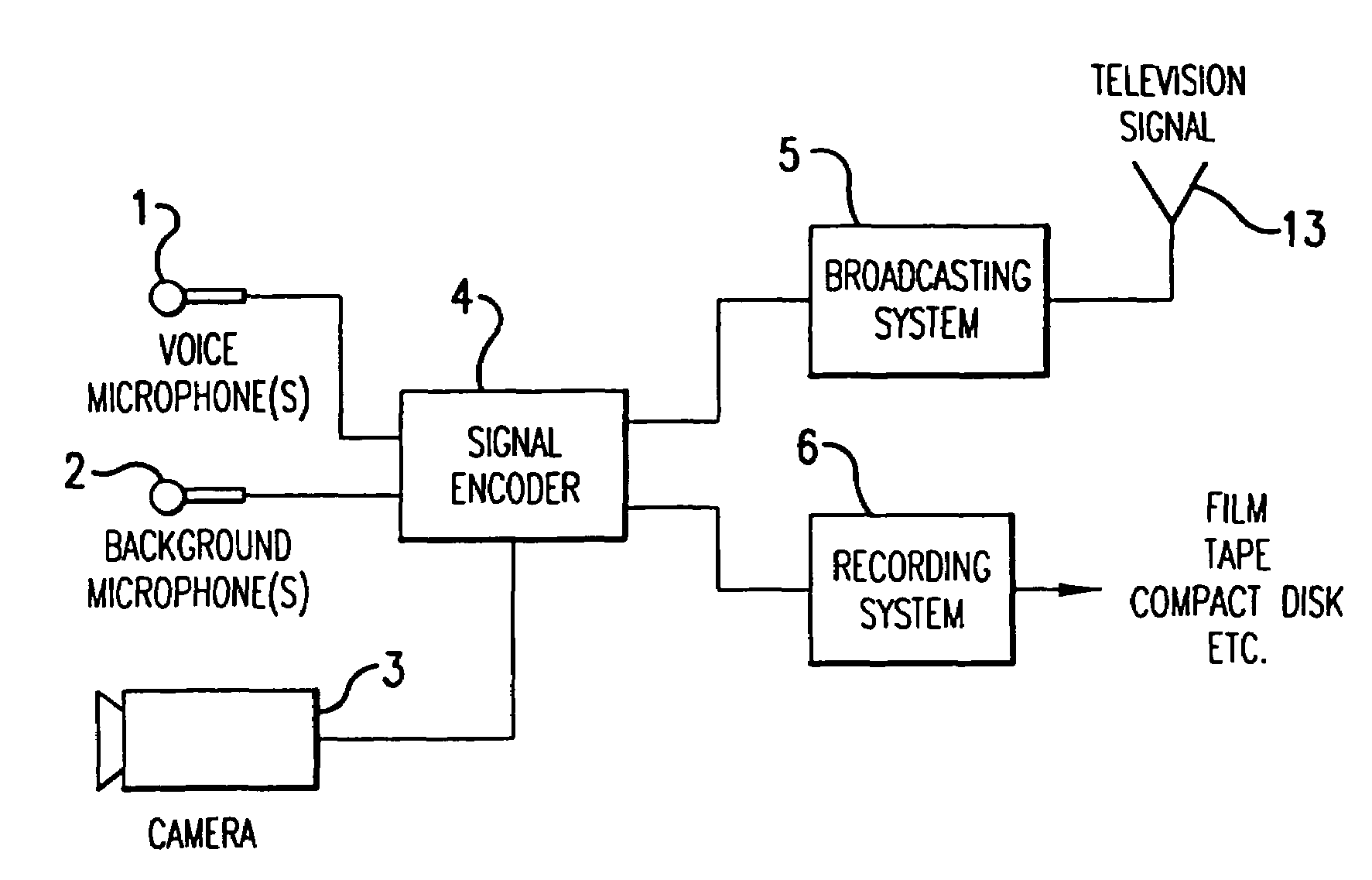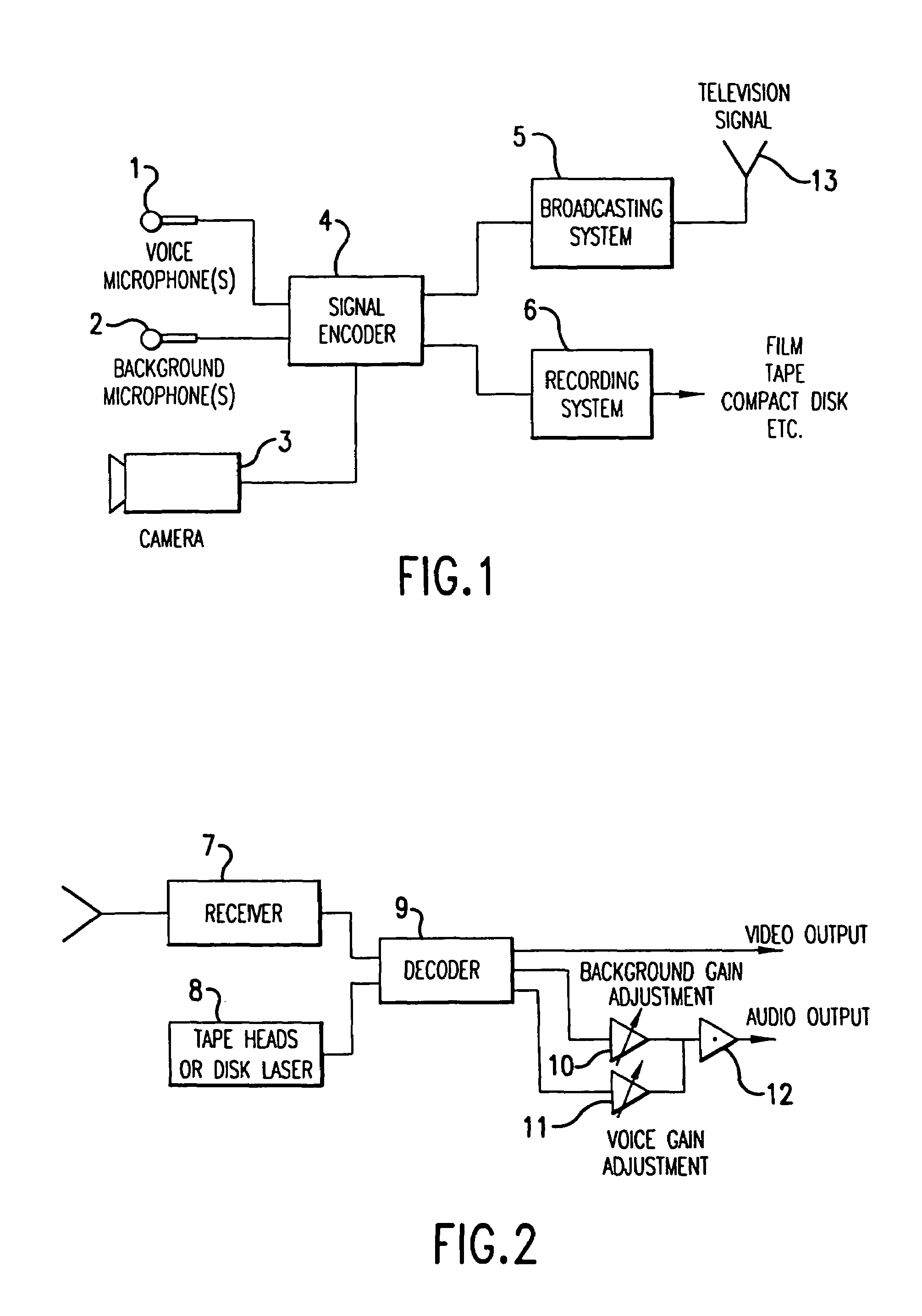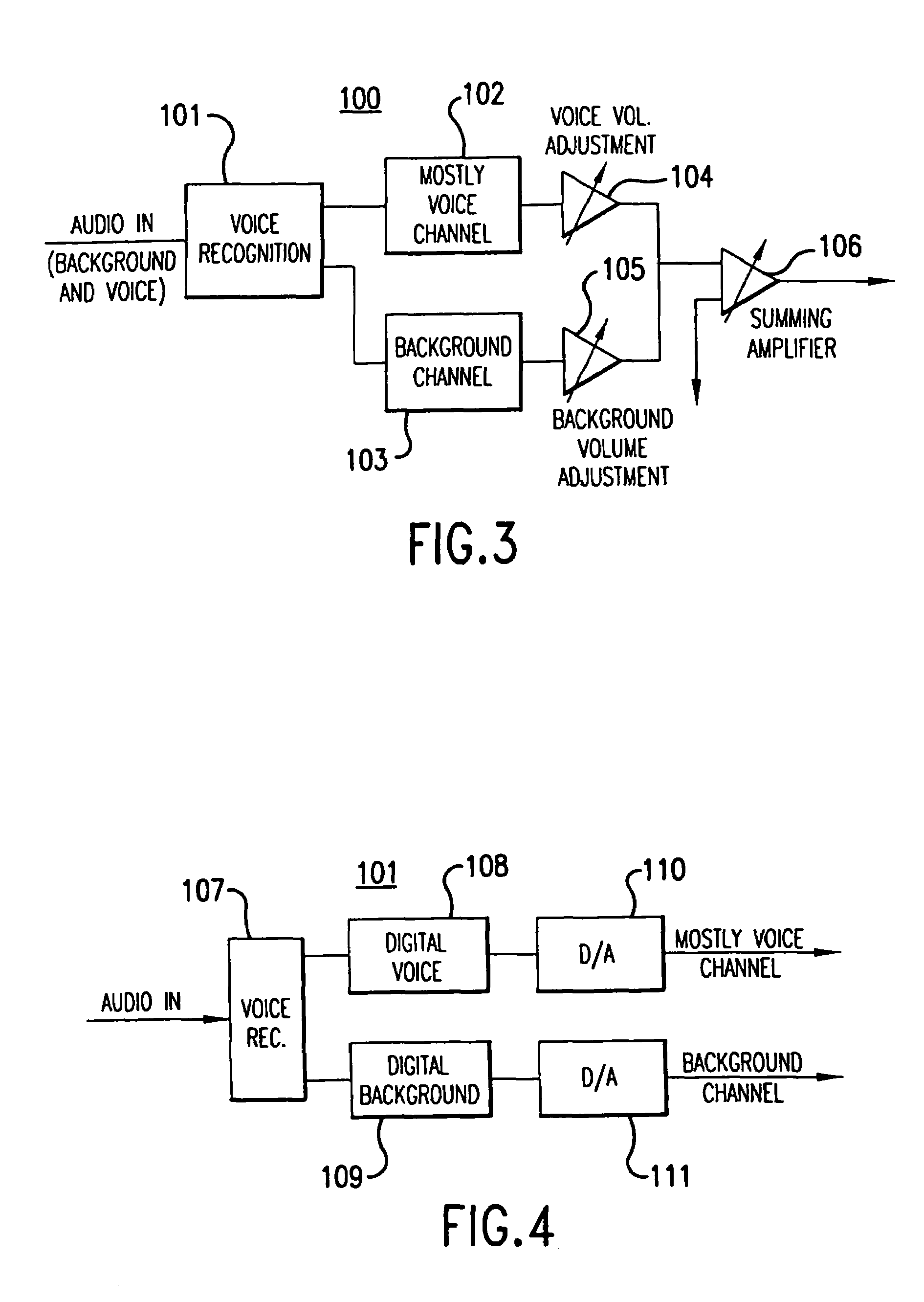User adjustable volume control that accommodates hearing
a volume control and user technology, applied in the direction of transducer details, electrical transducers, electrical apparatus, etc., can solve the problems of affecting the ability of the end user to discern speech components, the limitations of the signal content for each channel, and the existing algorithm cannot achieve either of these goals, so as to optimize the listening experience for any listener and power user capability
- Summary
- Abstract
- Description
- Claims
- Application Information
AI Technical Summary
Benefits of technology
Problems solved by technology
Method used
Image
Examples
Embodiment Construction
[0064]While much of the following description includes examples of the technologies used in conjunction with digital Dolby, the present invention can be used with any audio codec with multiple transmission capability, such as DTS, THX, SDDS, PCM, etc.
Significance of Ratio of Preferred Audio to Remaining Audio
[0065]The present invention begins with the realization that the listening preferential range of a ratio of a preferred audio signal relative to any remaining audio is rather large, and certainly larger than ever expected. This significant discovery is the result of a test of a large sample of the population regarding their preferences of the ratio of the preferred audio signal level to a signal level of all remaining audio.
Specific Adjustment of Desired Range for Hearing Impaired or Normal Listeners
[0066]Very directed research has been conducted in the area of understanding how normal and hearing impaired users perceive the ratio between dialog and remaining audio for different...
PUM
 Login to View More
Login to View More Abstract
Description
Claims
Application Information
 Login to View More
Login to View More - R&D
- Intellectual Property
- Life Sciences
- Materials
- Tech Scout
- Unparalleled Data Quality
- Higher Quality Content
- 60% Fewer Hallucinations
Browse by: Latest US Patents, China's latest patents, Technical Efficacy Thesaurus, Application Domain, Technology Topic, Popular Technical Reports.
© 2025 PatSnap. All rights reserved.Legal|Privacy policy|Modern Slavery Act Transparency Statement|Sitemap|About US| Contact US: help@patsnap.com



